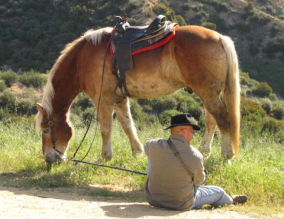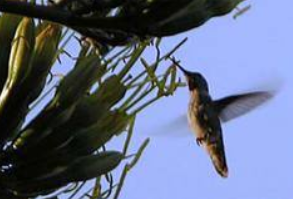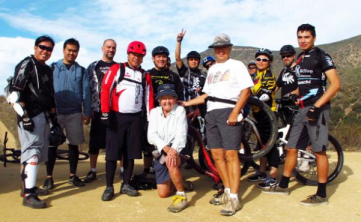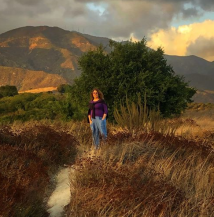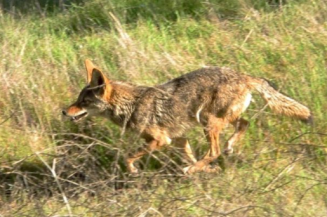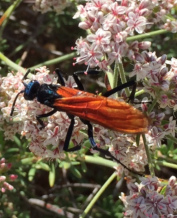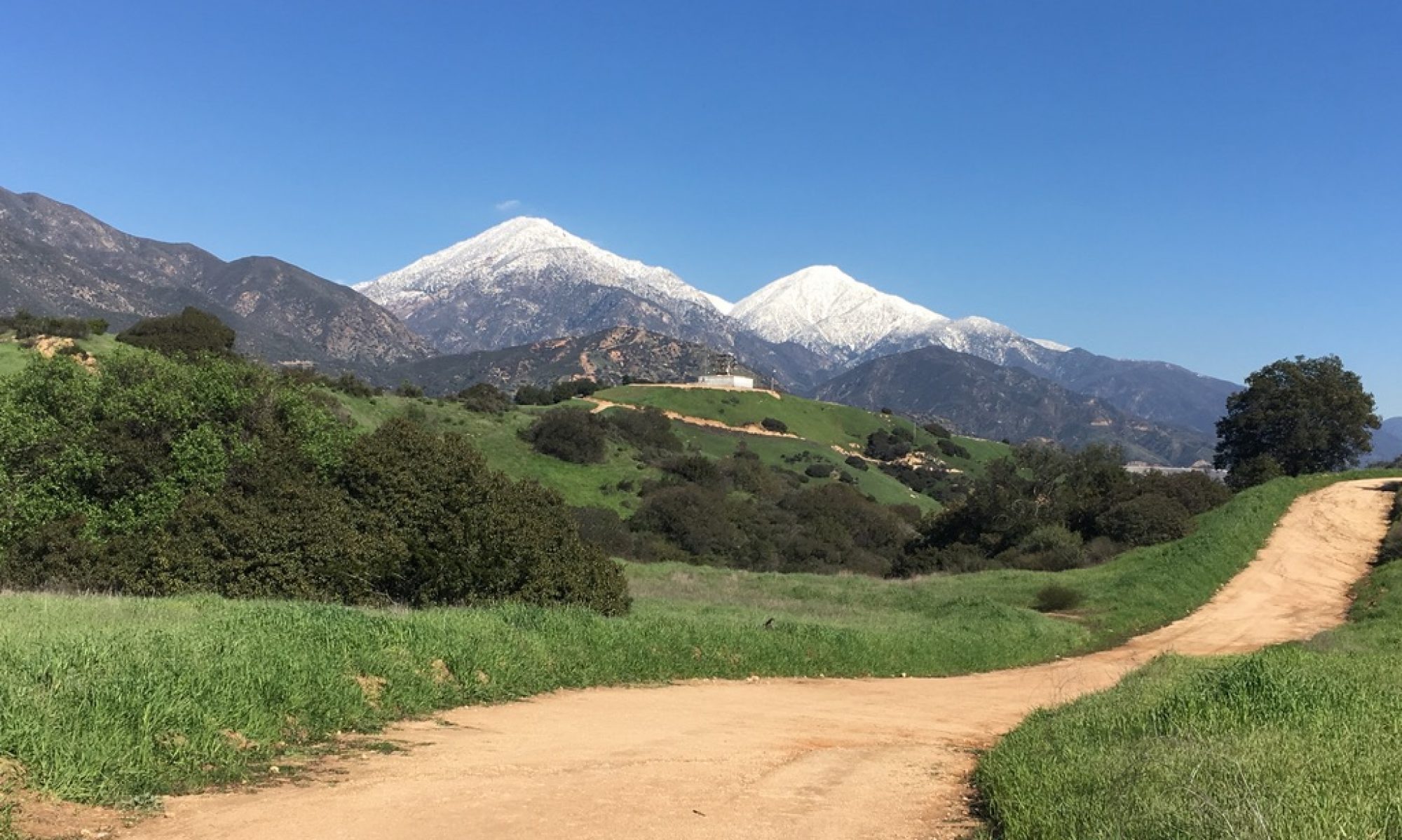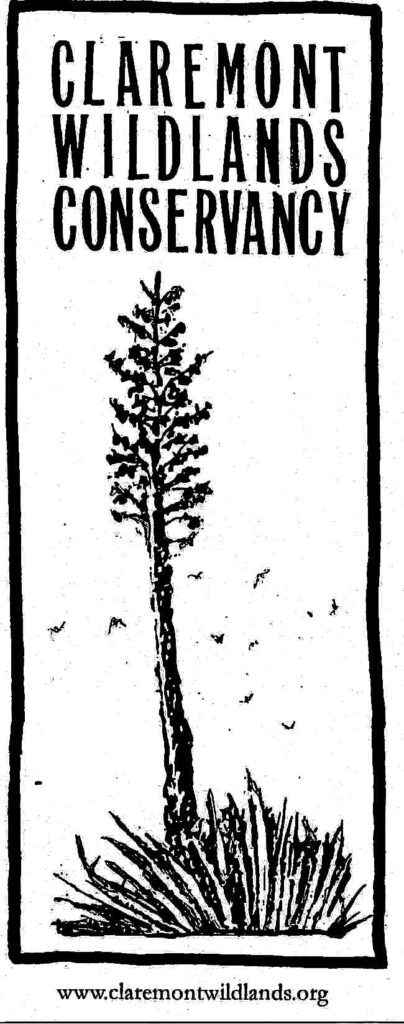
Claremont Hillside Property—Clara Oaks Estates, LLC
The Proposal
Claremont Wildlands Conservancy (CWC) and The Trust for Public Land are requesting funding to add 103 acres of hillside open space to the Claremont Hills Wilderness Park (CHWP). The property is privately owned, but the owner/developer is willing to sell the property to the City of Claremont. Should funding be secured and terms agreed on with the seller, the City would purchase the land and assume management of it as publicly accessible open space. Claremont Wildlands Conservancy and The Trust for Public Land are seeking all or a portion of the land’s appraised value of $7.2 million.
Summary
In 2016, developer Randy Lim and his partners purchased the parcel along the western border of Claremont’s hillsides with the intention of building 40-47 luxury homes through Clara Oaks Estates, LLC. Mr. Lim is willing to sell all 103 acres. However, if funding cannot be secured in a timely manner, he will proceed with the development. He is currently engaged in the entitlement process with the City as a back-up measure. The property was independently appraised at $7.2 million in August of 2018; if entitled, its value increases to $15 million. It is the last parcel in Claremont’s hillsides available for large-scale residential development or for preservation.
Over the past 20 years, the City of Claremont, CWC, and The Trust for Public Land have worked together to extend the Claremont Hills Wilderness Park across the 3,000 acres of foothills in the City’s jurisdiction. In 1995, only 40 acres of the hillsides were set aside as public parkland. Today, the park encompasses 2,500 acres. According to Trust for Public Land project manager, Paolo Perrone, it is “the best, or one of the best managed parks in the whole region.” The City has conscientiously implemented its 2016 Claremont Hills Wilderness Park Master Plan, which involved extensive community input. It protects the natural landscape while ensuring safe and equitable access for residents of all communities in the region. The park borders the San Gabriel Mountains National Monument and serves as a steppingstone from the urban landscape to the National Forest.
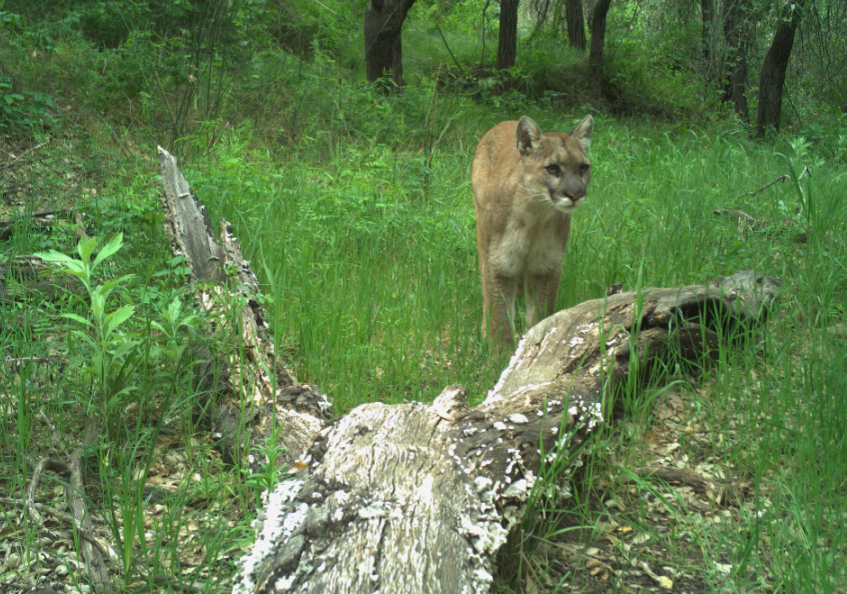
Because this is a rare opportunity and time is of the essence, CWC and The Trust for Public Land are working diligently to identify every funding opportunity to add Clara Oaks to the Claremont Hills Wilderness Park. We thank you for your consideration.
Benefits to the Public
- Conserving the Clara Oaks acres will protect creeks and streams that are the eastern headwaters of San Jose Creek and the San Gabriel River watershed. It will also protect an important foothill wildlands corridor that extends through and beyond Claremont by preserving native plant communities and animal habitat.
- Protection of 3,951 acres of California Streambeds or Waters of the State.
- Conservation of native vegetation including laurel sumac and California sagebrush with scattered live-oaks and western sycamores.
- Protection of native animals including black bear, cougar, bobcat, coyote, mule deer, skunk, brush rabbit, squirrel, woodrat, fox, red-tail hawk, Cooper’s hawk, great horned owl, acorn woodpecker, turkey vulture, and the endangered Crotch’s bumblebee.
- The purchase of the hillside property would expand the Claremont Hills Wilderness Park, which provides public access to open space. The park attracts tens of thousands of visitors from the region, many of them from disadvantaged communities with no access to open space. Many park visitors come from the neighboring communities of Pomona, La Verne, Montclair, Upland, and Ontario.
- Acquiring this property will preserve the natural landscape and reduce suburban sprawl.
- It will prevent development in an area of high fire hazard. Many of the Clara Oaks acres burned in the 2003 wildfire that swept through Claremont’s foothills, and they will burn again.
- Public access to open space promotes conservation for future generations through education and awareness.
Clara Oaks is located at the southwestern corner of the Claremont Hills Wilderness Park. Acquiring this parcel would expand the CHWP, which provides access to open space.
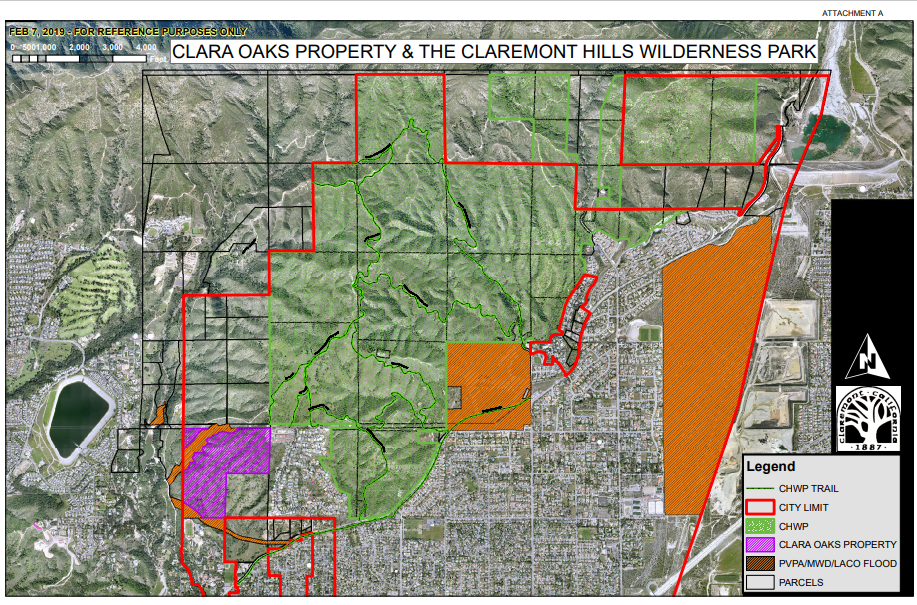
Acquisition of Clara Oaks will protect the natural landscape in perpetuity.
Adding Clara Oaks to the CHWP protects the natural landscape from suburban sprawl and opens it to passive recreational activities such as hiking and mountain biking.
Views of Clara Oaks show natural landscapes, vegetation, and steep terrain which make it an ideal environment for passive recreational opportunities such as hiking and mountain biking. The proposed acquisition will eliminate “urban sprawl” and conserve the open space in perpetuity. This is the last parcel in private hands that can accommodate a large number of dwelling units if allowed to be developed. It is critically important to the region to prevent further urban intrusion into the hillsides of Claremont and preserve its natural resources.
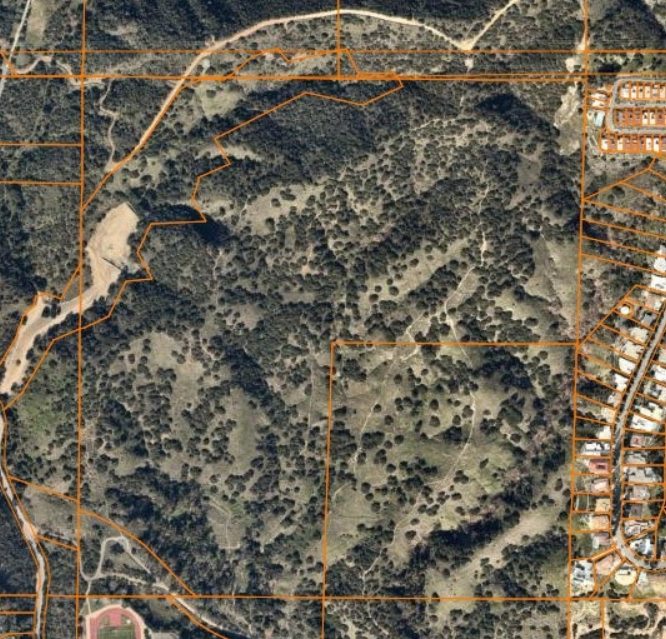
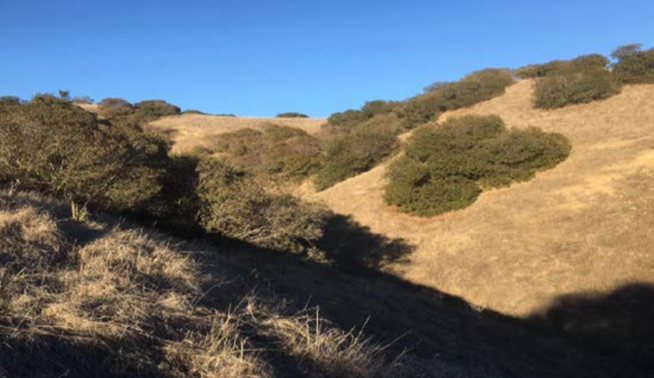
The CHWP is a popular regional resource.
A 2014 survey of over 2,000 park visitors for the CHWP Master Plan study found that 82 percent of park visitors came from outside of Claremont, many from disadvantaged communities. Latest estimates are that the park has over 500,000 visits a year.
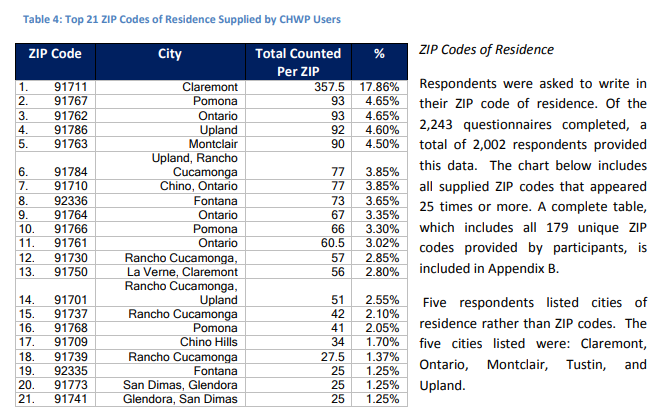
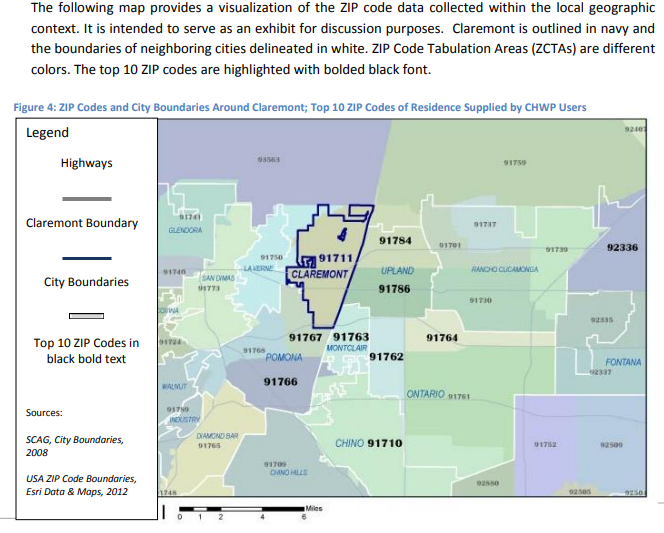
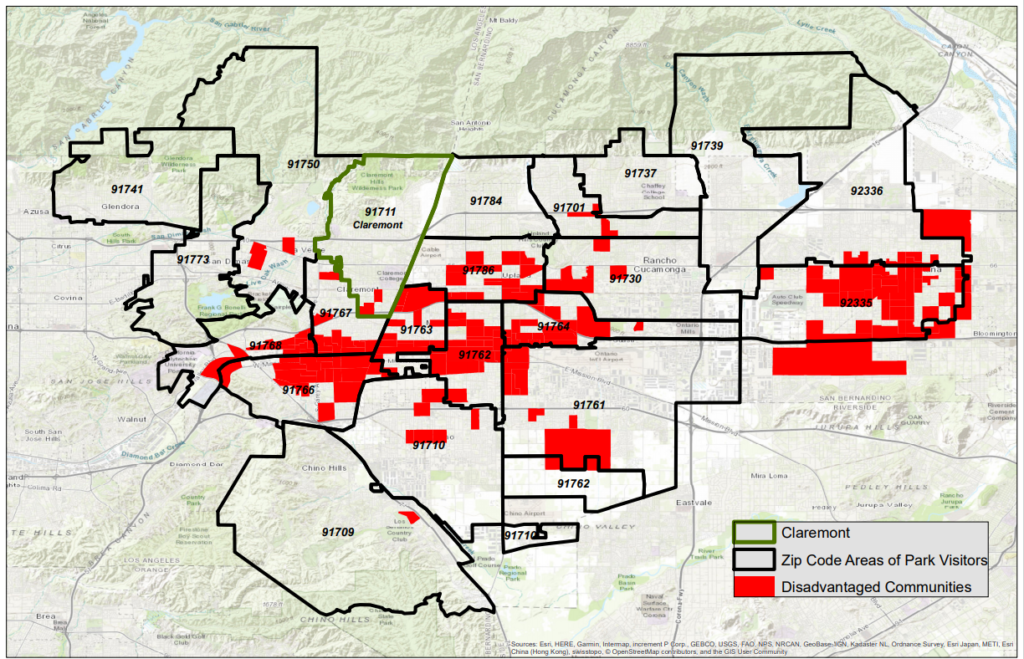
Clara Oaks would become the closest entrance to the CHWP from severely disadvantaged areas of Pomona.
The Clara Oaks entrance is about 1.5 miles from a stretch of trailer parks, extended-stay hotels, and affordable apartment complexes in the area of Foothill Boulevard and Garey Avenue in the city of Pomona. It is within easy and safe walking and biking distance and is one mile from the nearest bus stop.
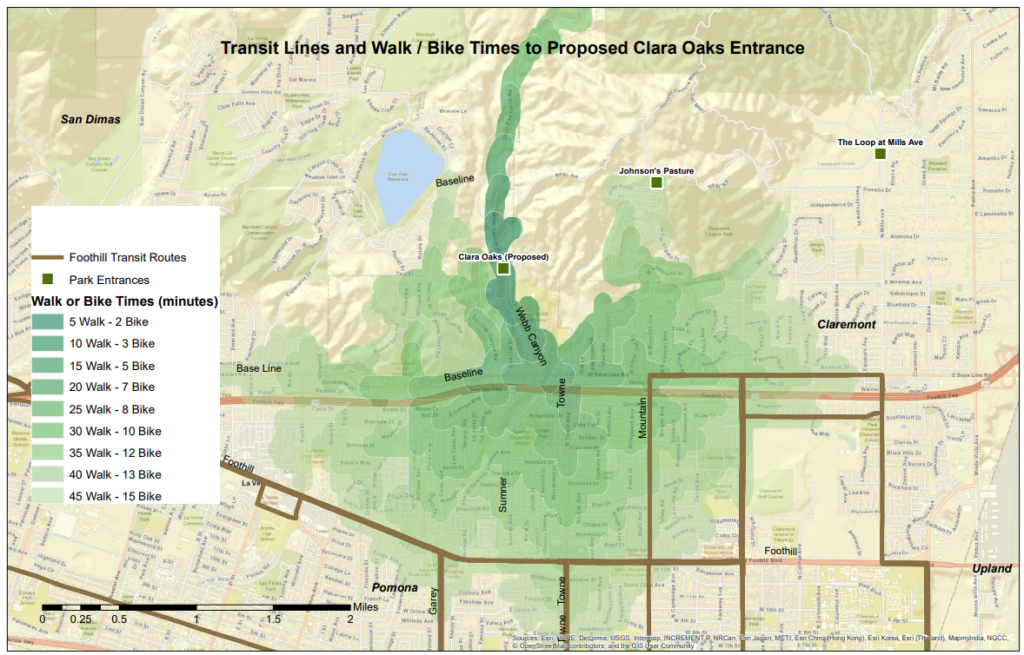
Clara Oaks and the CHWP are in a zone of high wildfire danger.
The CHWP and the Clara Oaks area burned as recently as 2003 in the Grand Prix fire. Development of the parcel would put future homeowners at risk.
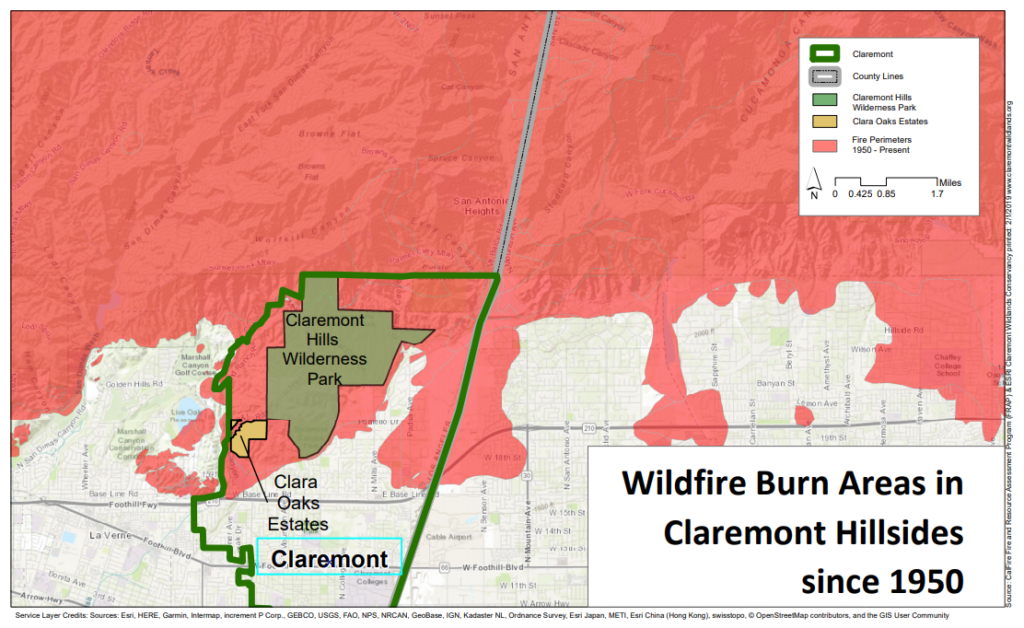
Preserving Clara Oaks will preserve a valuable wildlife corridor through the foothills.
The map shows the potential for a wildlands corridor along the San Gabriel foothills. These recent photos were taken on the Clara Oaks site as part of a study of local wildlife by Pitzer College Professor Paul Faulstich.
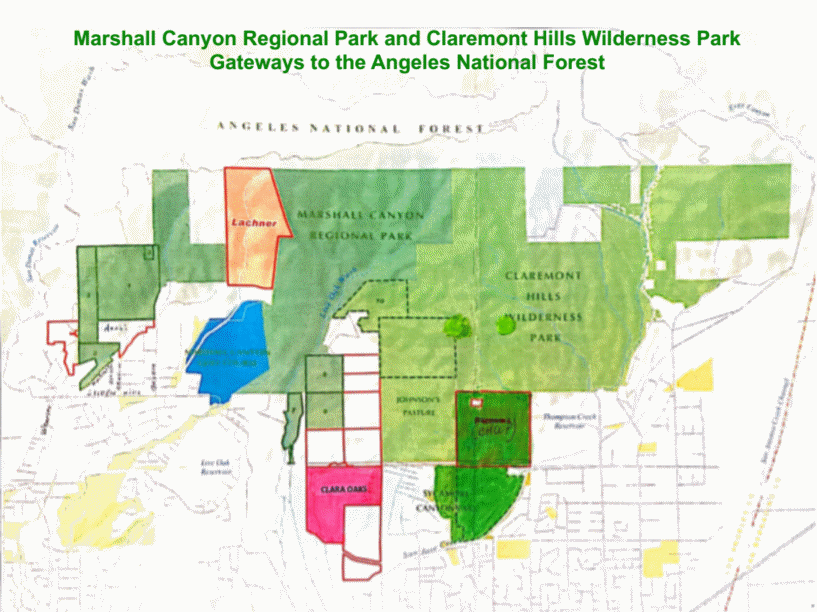
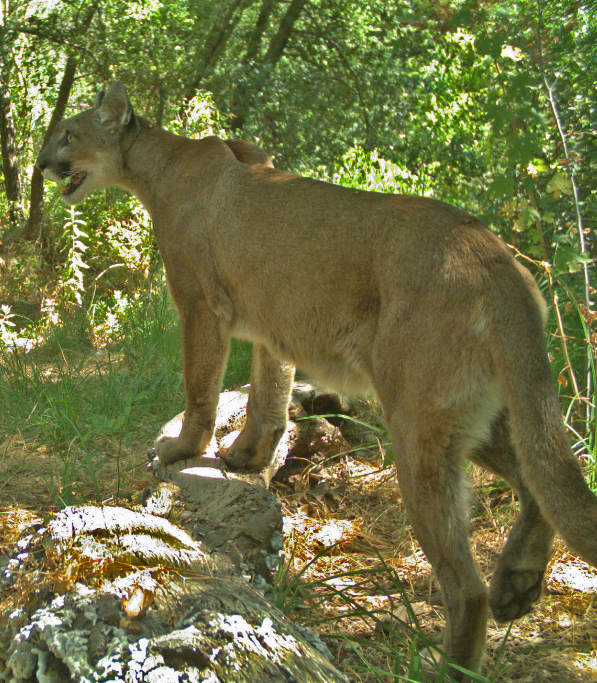

Clara Oaks contains important watershed areas, plant habitat, wildlife, and bird life.
These scientists’ reports highlight the valuable natural resources on the site.
**************************************************************************************************************
Report from Watershed Consultant Drew Ready
Water Conservation Specialist, ISA Certified Arborist (WE-10232A)
December 10, 2018
Location – AINs 8669-012-004 & 8669-012-005, TTM 73942, City of Claremont, Section 32, Township 1 North, Range 8 West, USGS Mt. Baldy 7.5’ Topographic Quadrangle Map
The tentative tract map parcel #73942 of approximately 100 acres is located in the eastern edge of San Gabriel River Watershed and Upper San Jose Creek Subwatershed (Hydrologic Unit Code 180701060501). The San Gabriel River Watershed is a 640-square-mile area in eastern Los Angeles County. The San Gabriel River has five main tributaries of the river are the North Fork, East Fork, West Fork, Walnut Creek, San Jose Creek, and Coyote Creek. The river flows for 58 miles through residential, commercial and industrial development to the Pacific Ocean in Long Beach and runs through portions of 37 cities in Los Angeles and Orange Counties.
San Jose Creek Subwatershed is designated as an impaired reach of the San Gabriel River Watershed with high levels of coliform and algae. Initial site walks and reviews of topographic maps suggest there are three primary drainages on the Clara Oaks parcel that drain to the Thompson Creek culvert and eventually to San Jose Creek and the San Gabriel River.
An initial Jurisdictional Study was undertaken by Clara Oaks Estates, LLC in October 2017 to identify and map the wetland and streambed areas of the property that may be subject to State or Federal regulation requiring permits for any disturbance/construction. Permitting agencies include the U. S. Army Corps of Engineers (USACOE), the California Department of Fish and Wildlife (CDFW), and the Regional Water Quality Control Board (RWQCB).
A preliminary determination was made by L&L Environmental, Inc. (L&L). L&L identified 17 California Streambed and Waters of the State features on the parcel that cover approximately 8.4 of the 100-acre property, none of which qualify as federal wetlands. The report states, “an evaluation of the planned development indicates that 7,703 lf/172,087 sq. ft. (3.951 acres) of California Streambeds or Waters of the State will be impacted, of which 3,862 lf/17,120 sq. ft. (0.393 acre) are also “Waters of the U. S.” that will be impacted by the current project design.
Cited
Preliminary Jurisdictional Delineation Assessment of Aquatic Resources for TTM 73942, City of Claremont Los Angeles County, CA. Prepared for Clara Oaks Estates, LLC by Leslie Irish, Principal & Delineator lirish@llenviroinc.com
Los Angeles County Department of Public Works, San Gabriel River Corridor Master Plan, 2006 Retrieved from http://www.ladpw.org/wmd/watershed/sg/mp/mp.cfm
************************************************************************************************************
Report from Botanist Naomi Fraga, Ph.D.
Director of Conservation Programs,
Rancho Santa Ana Botanic Gardens, Claremont
Site visit December 10, 2018
The vegetation at the Clara Oaks site is dominated by laurel sumac (Malosma laurina) and California sage-brush (Artemisia californica) forming an open stand of California coastal sage scrub with a herbaceous ground-cover of mostly non-native annual grasses (Bromus sp.). The north high ridgeline of the site from 34.13266, -117.73985 to 34.13496, -117.73401 has scattered oaks including coast live oak (Quercus agrifolia), San Gabriel oak (Quercus durata var. gabrielensis), and a hybrid oak with parentage from the San Gabriel oak and Engelmann oak (Quercus engelmannii). San Gabriel oak and Engelmann oak are both plant species of limited distribution and considered to have high conservation value (CNPS 2018). Western sycamore trees (Plantanus racemosa) line the eastern drainage along with coast live oaks (Quercus agrifolia), and eucalyptus form a stand at the southern end of the property.
Literature Cited
California Native Plant Society (2018). Inventory of Rare and Endangered Plants of California. http://www.rareplants.cnps.org/index.html. accessed on December 10, 2018.
**************************************************************************************************************
Report from Wildlife Videographer Paul Faulstich, Ph.D.
Professor of Environmental Analysis, Pitzer College
November 30, 2018
Paul Faulstich employs digital trail cameras to capture images of animals in their natural environs and engaged in their normal activities. Using motion- and infrared-triggered trailcams, he has documented animal demographics and behaviors within the Claremont Hills Wilderness Park (CHWP) and surrounding foothills for the past six years. The images shed light on animals inhabiting the foothills and how recreational use and proximity to development affects populations. Faulstich has a special agreement with the City of Claremont to conduct this study, which is the only approved study in the CHWP at this time.
His work has revealed valuable ecological data. As part of his study he identifies individuals and he has been able to document three generations of one cougar lineage inhabiting the Wilderness Park over the past five years. He has documented mountain lions traveling between the San Dimas Experimental Forest to the west and the Wilderness Park; the Clara Oaks parcel is along this corridor and is an important piece of the patchwork of open space providing passageway for cougars and other predators. In southern California, the territory for male lions is about 100 square miles, so open space and corridors are of critical significance. Southern California residents are fortunate to live near wild open spaces large enough to sustain mountain lions and other wildlife, but as Faulstich’s research reveals their populations are vulnerable.
On November 30, 2018, several members of Claremont Wildlands Conservancy were shown a portion of the Clara Oaks property by Steven Austin, the project engineer for the Clara Oaks development. They spotted signs of numerous animal species: deer (tracks and scat), bear (tracks), bobcat (scat), coyote (tracks), rabbit (scat), squirrel (tracks), woodrat (nest and scat), and fox (tracks and scat). Overhead three Red-tailed Hawks and a pair of Turkey Vultures circled. This causal observation during a short visit, walking mostly on existing roads, corroborated their sense of the ecological value of this area.
Faulstich revisited the Clara Oaks property on December 3 and ventured further into the canyons on a brief reconnaissance visit. He set up two trailcams on the property and saw ample animal trails. He found evidence of bears from claw marks on tress. He observed a roosting Great Horned Owl and numerous smaller avian species. He noted that there are a good number of wood-rat nests in the canyons. Faulstich also documented three kill sites; two with deer bones and one with unidentified remains. The most recent of these kill sites had telltale signs of cougar predation, so there is evidence that mountain lions hunt on the site.
This ongoing research within the Claremont Wilderness Park and surrounding region reveals its rich faunal diversity and the ecological importance of expanding protected habitat at this urban/wildlands interface.
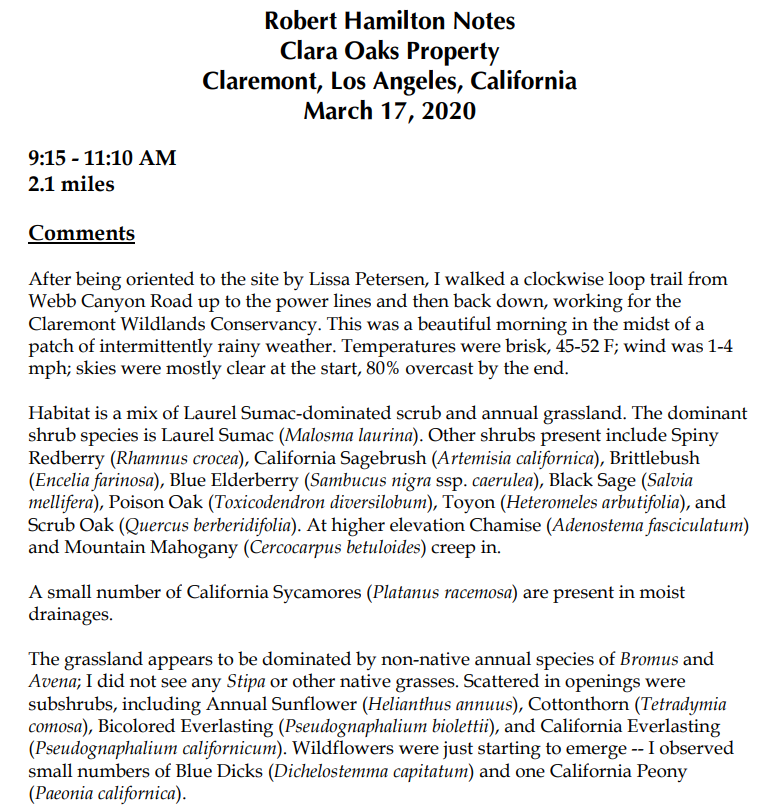

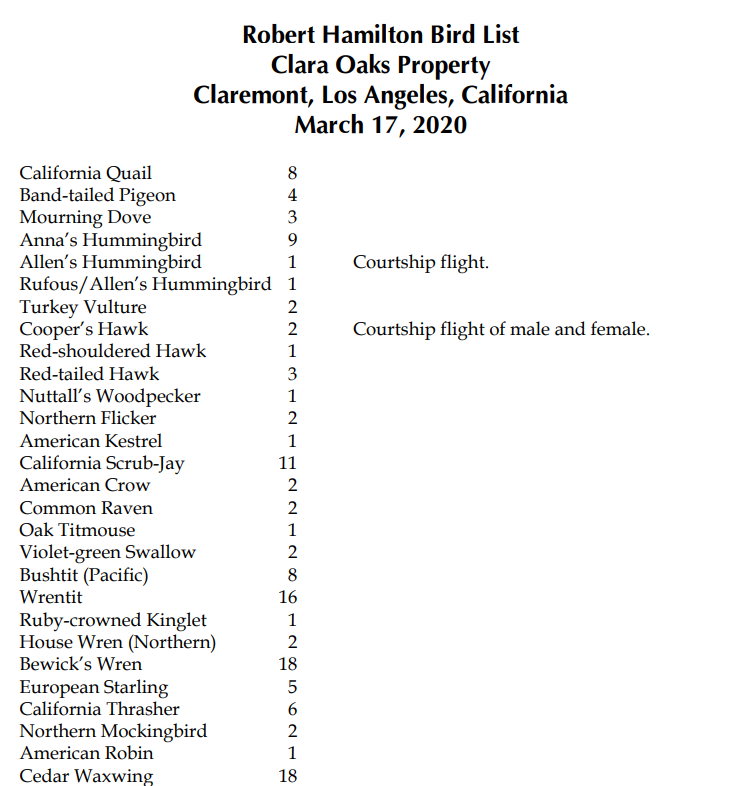
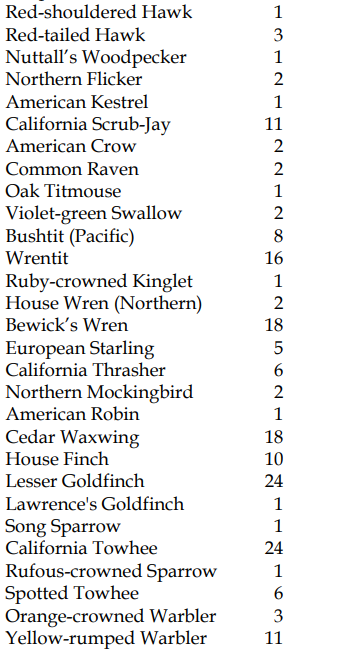
The Park has grown from 40 acres in 1995 to 2,556 today, with 740 acres still in private hands.
This accomplishment reflects the City and CWC’s long-term commitment to preserving Claremont’s foothills for present and future generations to enjoy.
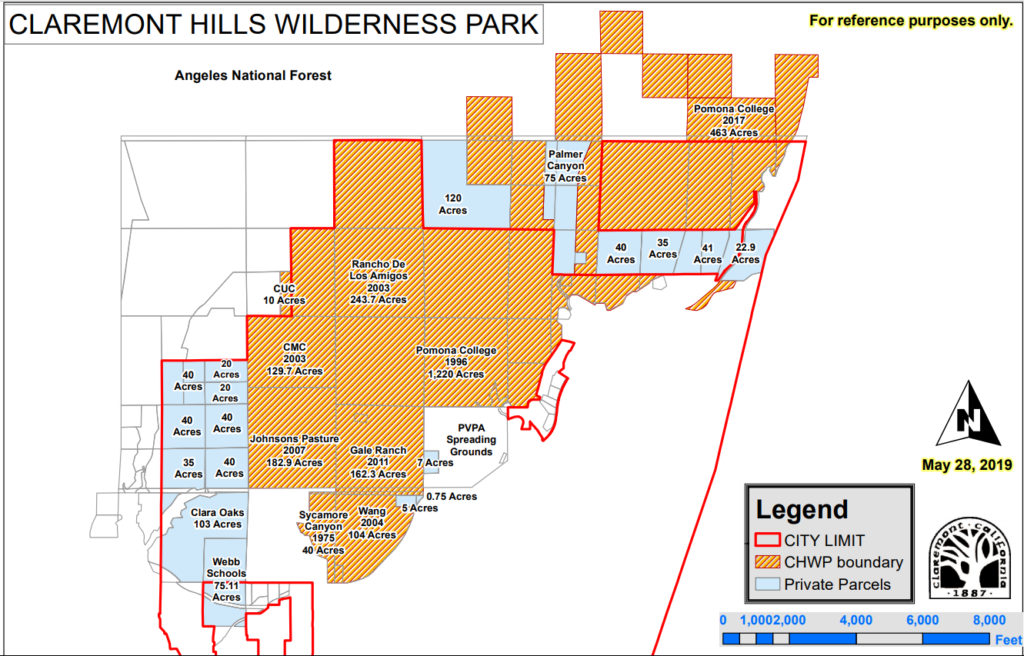
The Claremont hillsides, protected by the Claremont Hills Wilderness Park, are a place of beauty, natural wonders, and peace for visitors.
